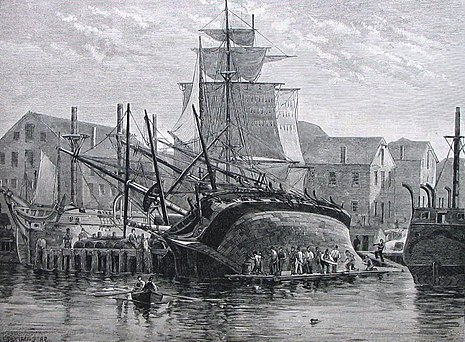
Wikimedia Commons
Careening, also known as heaving down, is a method of exposing the hull of a ship by positioning the vessel on its side, thus avoiding the need for a dry dock. The term is derived from the Latin carina, originally meaning a “nutshell”, which came to be used for the hull of a ship.[1] Before wooden ship’s hulls were protected from marine growth by fastening copper sheets over their surface, fouling from barnacles and other marine life could seriously affect the sailing qualities of a ship by creating a significant amount of drag.[2]
The ship would be laid ashore on a steeply sloping beach, parallel to the shoreline, and ropes attached to its mastheads to pull it over and expose one side of the hull. Once that side of the hull had been dealt with, the vessel was refloated on the incoming tide, and turned around to complete the operation on the other side; a beach favoured for careening was called a careenage. Today only small vessels are careened; large vessels are placed in dry dock.[3]
During the classic era of piracy in the Caribbean, from about 1650 until the mid-1720s,[4] having no access to dry docks, pirates would often careen their ships in secluded bays for necessary repairs or hull cleaning; such “safe havens” could be found throughout the Caribbean islands and beyond.[5]
